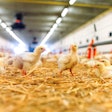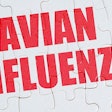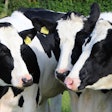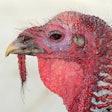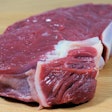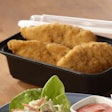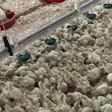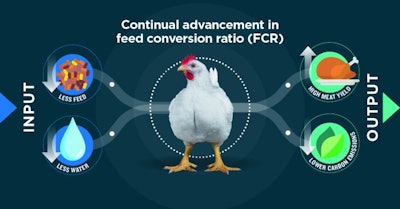
Sustainability is good business. Promoting its economic benefits, along with its environmental and social pillars is not only good for people and the planet, but also helps to sustain the economic health of the poultry supply chain.
Breeding stronger businesses
In their paper “Input-output efficiency of economic growth,” Professors Lei Kang and Zhouying Song advise that: “Achieving sustainable and efficient economic development involves…low input, low emission and high yield.”
As an industry, we can achieve this economic model through continual, balanced advances in bird efficiency, performance, health and welfare. Poultry, in turn, becomes a viable business proposition for younger people entering the job market, contributing to the global poultry industry’s sustainability.
Biosecurity: key to economic health
Poultry businesses worldwide depend on the ready availability of healthy breeding stock. Providing these birds, breeders sit at the top of the supply chain, and food safety and security begin with them. Poultry breeders have strict programs for biosecurity and hygiene, which are key to keeping harmful pathogens out of the food chain.
Breeding sustainability
We all understand that feed is the biggest cost in a poultry business. Part of an effective balanced breeding program is continual advancement in feed conversion ratio (FCR). FCR is the ratio of input (feed) to output (meat yield). Supporting Kang’s and Song’s low input/low emission/high yield formula, FCR improvement in recent years makes modern birds more biologically efficient – less feed is needed to grow healthy, robust birds.
Feed prices are increasing across the globe, and we are all feeling the pain. This is due, in part, to supply chain woes resulting from COVID-19 and further amplified by current political developments and rising energy prices.
Feed efficiency is especially important now, as it affects farming businesses’ income and profit. Birds with good FCR also have higher performance and are better at absorbing the nutrition from their feed, making them healthier, with higher livability. Birds today also have a faster growth rate, which means shorter grow-out periods, saving on housing costs. Fewer houses, along with reduced feed transportation, result in lower cost and energy use.
Feed efficiency, strong performance, disease resistance, healthy growth rates – all these qualities spell greater economic sustainability for poultry farmers.
Breeding consumer choice
In today’s consumer markets, change is the only constant. There are many segments
– restaurants, fast food chains, grocery stores with their various offerings, open markets and so on – and their offerings continually evolve to keep up with consumer preferences.
Additionally, global growers are operating under varying climates and production systems. Therefore, an absolute must is for breeders to maintain broad and diverse gene pools, offering an array of choice and allowing producers to offer the right bird for the right market. With this biodiversity, as breeders work with their customers to keep a finger on the market’s pulse, they are ready to respond to market “asks” for today and tomorrow.
Breeding economic sustainability
A balanced breeding strategy is important to the businesses of poultry producers and has enabled birds today to become more feed efficient, perform better and have improved health and welfare. This balance of traits is essential in achieving food safety and security and in sustaining the businesses of poultry producers worldwide for now and for years to come.
This is the first article of a two-part series. In the September edition of Poultry International Jan Henriksen will look at the social and environmental pillars of sustainability.
Poultry welfare is simply good business





